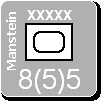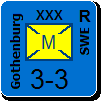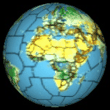Froonp
Posts: 7995
Joined: 10/21/2003
From: Marseilles, France
Status: offline

|
From the 1940 Collier Atlas, pages 179-183, expanded upon
Other non colony Countries
Afghanistan
An Asiatic kingdom, borders Soviet Union, India and Iran (Persia). Peoples, Afghans, Tajiks and independent tribes. Religion, Islam. Products, grains, fruits, hides, wool. Capital, Kabul. King Mohammed Zahir Shah (1933-1973). Area, 245,000 sq. m. Population, 9,000,000 (est).
Argentina
Argentina Republic occupies a major part of southern South America ad is ordered by Bolivia, Paraguay, Brazil, Uruguay, Atlantic Ocean and Chile. Forest, field and animal products are exported. People, chiefly Spanish descent. Language, Spanish. Capital, Buenos Aires. President, Roberto María Ortiz (1938-1942) Ramón Castillo (1942-1943), Arturo Rawson (1943), Pedro Pablo Ramírez (1943-1944), Edelmiro Julián Farrell (1944-1946). Area, 1,079,965 sq. m. Population, 12,228,000.
Belgium
Kingdom of Belgium, in Western Europe, is bordered by the Netherlands, Germany, Luxembourg, France and the North Sea. Languages in Belgium are French and Flemish. Products, iron and steel, motor cars, glass, lace, artificial silk. Capital, Brussels. King Leopold III (1934-1951). Area, 11,752 sq. m. Population, 8,275,552.
Bolivia
Bolivian Republic is an inland country of South America, lying across the Andes and bordered by Brazil, Paraguay, Argentina, Chile and Peru. People, Indians, mixed races, Spanish. Religion, Roman Catholic. Products, rubber, hides, cocoa, alpaca wool, oil, tin, lead, copper, silver. Capitals, Sucre and La Paz. President, David Toro Ruilova (1936-1937), Germán Busch (1937-1939), Carlos Quintanilla (1939-1940), Enrique Peñaranda (1940-1943), Gualberto Villarroel (1943-1946). Area, 514,464 sq. m. Population, 3,077,660.
Brazil
United States of Brazil, the largest South American country, occupies the eastern and central part of the continent and is bordered by every South American nation except Chile. Near the Equator in northern Brazil, the Amazon, greatest of rivers, drains a vast forest region. People and language, largely Portuguese, except Indians. Religion, chiefly Roman Catholic. Products, coffee, cotton, sugar, rubber, hides, woods, manganese, gold. Capital, Rio de Janeiro. President, Dr. Getulio Vargas (1930-1945 & 1951-1954). Area, 3,285,319 sq. m. Population, 45,332,660.
Bulgaria
A kingdom in the Balkan Peninsula, southeastern Europe, is bordered by Rumania, Black Sea, Turkey, Greece and Yugoslavia. Agriculture is the chief industry. People, Bulgars. Religion, Orthodox Greek Catholic. Capital, Sofia. King, Boris III (1918-1943), Simeon II (1943-1946). Area, 39,814 sq. m. Population, 6,090,215.
Chile
Republic of Chile, extends for some 2,485 miles along the southwest coast of South America. People, chiefly of Spanish descent. Language, Spanish. Products, nitrates, copper, iron ore, gold, silver, coal, grains and fruits. Capital, Santiago. President, Pedro Aguirre Cerda (1938-1941), Juan Antonio Ríos (1942-1946). Area, 286,322 sq. m. Population, 4,626,508.
Colombia
The Republic of Colombia. This South American countries lies in the northwestern part of the continent and is bordered by Panama, Caribbean Sea (640 miles), Venezuela, Brazil, Ecuador, Peru, Pacific Ocean (465 miles). Language, Spanish. Products, precious metals, emeralds, tropical fruits, coffee, hides, rubber. Capital, bogota. President, Alfonso Lopez Pumarejo (1934-1938 & 1942-1945), Eduardo Santos Montejo (1938-1942). Area, 441,651 sq. m. Population, 9,018,000.
Czechoslovakia
Central Europe, is bordered by Germany, Poland, Rumania and Hungary. Exports, beet sugar, glass textiles. Capital, Prague. Area, 54,192 sq. m. Population, 15,096,025 (Before partition and annexation). In October, 1938, Germany occupied the Sudetenland area and in March, 1939, seized the remaining provinces. Hungary claimed Carpathian Ruthenia in the South (1939).
Denmark
Kingdom of Denmark, on the Peninsula of Jutland and adjacent islands, western Europe, is bordered by Skagerrak, Baltic Sea, Germany and North Sea. Greenland and Faeroe Islands belong to Denmark. Iceland, otherwise independent, has the same King. Agriculture and dairying are the chief industries, with manufacturing also important. King, Christian X (1912-1947). Area, 16,571 sq. m. Population, 3,656,000.
Ecuador
Republic of Ecuador, on the west coast of South America, is crossed by the Equator. People are largely Indian, or of mixed race. Products, tropical, include cocoa, cagua, ivory, nuts, coffee, hides and rubber. Capital, Quito. Provisional President, Federico Páez Chiriboga (1935-1937), Gil Alberto Enríquez (1937-1938), Manuel María Borrero (1938), Aurelio Mosquera (1938-1939), Carlos del Rio (1939 & 1940-1944), Andrés Córdova (1939-1940), Julio Enrique Moreno (1940), Julio Teodoro Salem Gallegos (1944-1944), José María Velasco Ibarra (1944-1947). Area, claimed 276,000 sq. m. Administered 176,155 sq. m. Population, 2,646,645.
Finland
A European Republic independent since 1919, is bordered by Norway, Arctic Ocean, Soviet Union, Gulf of Finland, Baltic Sea, Gulf of Bothnia and Sweden. Lumbering, agriculture and dairying are basic industries. People, Finns. Religion, Lutheran. Capital, Helsinki. President, Pehr Evind Svinhufvud (1931-1937), Kyosti Kallio (1937-1940), Risto Ryti (1940-1944), Carl Gustaf Emil Mannerheim (1944-1946). Area, 149,954 sq. m. (17,314 sq. m. water). Population, 3,762,000.
Greece
Kingdom of Greece, situated on a peninsula extending from southern Europe into the Mediterranean and bounded on the north by Albania, Yugoslavia, Bulgaria and Turkey. Products, olive oil, wine, textiles, cereals, leather. King, George II (1922-1924 & 1935-1947 (recalled from exile)). Capital, Athens. Area, 54,092 sq. m. Population, 6,750,000.
Hungary
Kingdom of Hungary, formerly united with Austria in the Austro-Hungarian Empire. Hungary became a republic in November 16, 1918. Since March 23, 1920 the country has been a monarchy with a regent. Hungary lost parts of Transylvania to Rumania; Croatia and Slovenia to Yugoslavia. People, Magyars. Language, Hungarian. Religion, Roman Catholic. Capital, Budapest. Regent, Admiral Nicholas Horthy de Nagybanya (1920-1944). Area, 35,875 sq. m. (not including the Carpathian Ruthenia annexion). Population, 8,898,367.
Iran (Persia)
Is a kingdom in southwestern Asia, on the Plateau of Iran. It is bordered by Soviet Union, Caspian Sea, Afghanistan, Baluchistan, Arabian Sea, Persian Gulf and Iraq. It is a land of ancient history. People, Persian. Religion, Islam, Shi’a sect. Exports, petroleum, carpets, fruits, skins, tobacco. Capital, Teheran. Shah, Reza Shah (1925-1941), Mohammad Reza Pahlavi (1941-1979). Area, 628,000 sq. m. Population, 15,055,115.
Liberia
A republic on the west coast of Africa, was settled by freed slaves from North America in 1822, and became independent in 1847. People, Black Africans. Language, English. Capital, Monrovia. President, Edwin James Barclay (1930-1944), William Vacanarat Shadrach Tubman (1944-1971). Area, 43,000 sq. m. (est). Population, 2,250,000.
Mexico
Mexican Republic, immediately south of the United States, is bordered by the United States, Gulf of Mexico, British Honduras, Guatemala and the Pacific Ocean. People, Indians, mixed races, whites of Spanish descent. Language, Spanish. Religion, Roman Catholic predominating. Products, silver, gold, copper, lead, oil, coal and other minerals, henequen, coffee, rubber, hides, guayule, cattle, sugar. Natural resources are great. Capital, Mexico, D.F. President, General Lázaro Cárdenas (1934-1940), Manuel Ávila Camacho (1940-1946). Area, 760,290 sq. m. Population, 16,552,722.
Netherlands
The Netherlands (Holland), a kingdom of Western Europe, bordered by North Sea, Germany and Belgium. Possessions include Netherland East Indies (Java, Sumatra, part of Borneo, Celebes, other islands), Curaçao and the Dutch Guyana in South America. People and language, Dutch. Religion, Dutch Reformed, Roman Catholic, others Christian, Mohammedan, and Buddhist. Capital, The Hague. Queen, Wilhelmina (1890-1948). Area, 13,202 sq. m. Population, 8,392,102.
Norway
A European monarchy occupying the western par of the Scandinavian Peninsula, is bordered by Finland, Sweden, Skaggerak, North Sea and Atlantic Ocean. People and language, Norwegian. Religion, Evangelical Lutheran. Resources, forests, fisheries, water power. Exports, canned fish, undressed furs, wood pulp, ship propellers, hydroelectric power. Capital, Oslo (Christiana). King, Haakon VII (1905-1957). Area, 124,984 sq. m. (besides Svalbard, 21,142 sq. m. est). Population, 2,871,400.
Panama
Republic of Panama is bordered by Costa Rica, Caribbean Sea, Colombia and Pacific Ocean, and crossed by the Canal Zone. People, Spanish, Black Africans, Indians. Language, Spanish. Religion, chiefly Roman Catholic. Product, bananas, cacao, coconuts, caoutchouc, coffee, sugar, tobacco, woods, hides, pearl shell, tortoise shell. Capital, Panama. President, Juan Demostenes Arosemena (1936-1939), Arnulfo Arias Madrid (1940-1941), Ricardo Adolfo de la Guardia Arango (1941-1945). Area, 29,065 sq. m. Population, 483,800 (not including the Canal Zone).
Paraguay
Republic of Paraguay an inland country of South America, is bordered by Bolivia, Brazil and Argentina. Paraguay River gives access to the sea. People, of Indian, Spanish, some Black Africans origins. Language, Spanish. Religion, Roman Catholic. Exports, cattle products, yerba, tobacco, cotton. Capital, Asuncion. President, Dr Eusebio Ayala (1932-1936), Col. Rafael Franco (1936-1937), Dr Felix Paiva (1937-1939), Gen. José Félix Estigarribia (1939-1940), Gen. Higinio Morinigo (1940-1948). Area, 272,395 sq. m. Population, 901,768.
Peru
Republic of Peru, on the west coast of South America, is bordered by Ecuador, Colombia, Brazil, Bolivia, Chile and Pacific Ocean. It was the land of the Incas. People, Indians, mestizos, whites. Exports, petroleum, copper, silver, coffee, sugar, cotton, cinchona, wool, hides. Capital, Lima. President, Gen. Don Óscar R. Benavides (1914-1915 & 1933-1939), Manuel Prado y Ugarteche (1939-1945 & 1956-1962). Area, 482,258 sq. m. Population, 6,237,000.
Poland
Polish Republic, established in November, 1918, included Russian Poland and part of East Prussia, Upper Silesia, Galicia, Posen and Lithuania. It was bordered by Baltic Sea, Lithuania, Latvia, Soviet Union, Rumania, Czechoslovakia and Germany. People, Slavs and Jews. Religion, chiefly Roman Catholic. Exports, coal, petroleum, iron and steel, zinc, timber, grains, animal products. Capital, Warsaw. Area, about 149,915 sq. m. Population, 33,418,000. Partitionned September, 1939 between Germany and Russia.
Portugal
Portuguese Republic, in the western part of the Iberian Peninsula, is bordered by Spain and Atlantic Ocean. People and language, Portuguese. Religion, Roman Catholic. Exports, sardines, cork, olive oil, resin, planks, hides, chemicals, wool. Capital, Lisbon. President, Marshall António Óscar Carmona (1926-1951). Area, 35,490 sq. m. Population, 6,825,000. Area of Colonies, 812,606 sq. m., Population of Colonies, 8,915,705.
Rumania
A kingdom in the Balkans, southeastern Europe, is bordered by Czechoslovakia, Poland, Soviet Union, Black Sea, Bulgaria, Yugoslavia and Hungary. People and language, Rumanian, Magyars, German, Jews, and various Slavic groups. Religion, Orthodox Church predominant. Exports, gain, petroleum, timber. Capital Bucharest. King, Carol II (1930-1940), Michael I (1940-1947). Area, 122,282 sq. m. Population, 19,013,363.
Saudi Arabia
Great Arid peninsula in southwestern Asia, has an estimated area of 1,000,000 sq. m. and a population estimated at 7,000,000. Included within it are the Kingdom of Saudi Arabia (Hejaz and Nejd); The Hadramaut; The Imamate of Yemen; The Sultanate of Kuwait; The Sultanate of Oman; Aden and several Sheikdoms. People, Arabians. Religion, Moslem. Capitals, Mecca and Riyadh. King of Saudi Arabia, Abdul Aziz ibn Abdur-Rahman Al Faisal Al Sa’ud (1927-1953).
Siam
A Kingdom of southeastern Asia, is bordered by Burma (in British India), French Indochina, Gulf of Siam, and Federated Malay States. Religion, Buddhist. Exports, rice, teak, tin. Capital, Bangkok. King, Ananda Mashidol (Rama VIII) (1935-1946) Area, 200,148 sq. m. Population, 14,464,489.
Spain
A republic of southwestern Europe, is bordered by Atlantic Ocean, France, Portugal, Mediterranean Sea, Strait and fortress of Gibraltar. Religion, Roman Catholic. Exports, olives, oranges, wine, quicksilver, minerals, cork, flax, cotton goods. President, Manuel Azaña (1936-1939). Prime Minister, Gen. Francisco Franco (1939-1975). Capital, Madrid. Area, European, 195,010 sq. m.; of colonies, 128,696 sq. m. Population, European, 24,583,096; of colonies, 934,686. Canary Island, Area,1,935 sq. m. Population, 370,853, Canaries and Balearic included with Spain proper.
Sweden
A European kingdom in the eastern part of the Scandinavian Peninsula, is bordered by Finland, Gulf of Bothnia, Baltic Sea, Kattegat, and Norway. Religion, Lutheran. Products, timber, paper pulp, dairy products, iron and steel, machinery. Capital, Stockholm. King, Gustav V (1907-1950). Area, 173,105 sq. m. Population, 6,233,100.
Switzerland
The Swiss Confederation, a republic in the Alps, is bordered by Germany, Austria, Italy and France. It originated August 1, 1291. People, Swiss. Language, German, French, Italian, Romansh. Religion, Protestant, Roman Catholic. Export, dairy products, salt, machinery, clocks, watches. Capital, Bern. President Albert Meyer (1936), Giuseppe Motta (1937), Johannes Baumann (1938), Philipp Etter (1939), Marcel Pilet-Golaz (1940), Ernst Wetter (1941), Philipp Etter (1942), Enrico Celio (1943), Walther Stampfli (1944), Eduard von Steiger (1945), Karl Kobelt (1946). Area, 15,940 sq. m. Population, 4,066,400.
Turkey
The Republic of Turkey, in southwestern Asia and southeastern Europe, is bordered by Greece, Bulgaria, Black Sea, Soviet Union, Persia, Iraq, Syria, Mediterranean Sea, Aegean Sea. People and language, Turkish. Resources, minerals, timber. Exports, tobacco, cereals, textiles, cotton, fruits. Capital, Ankara. President, Mustafa Kemal Atatürk (1923-1938), General İsmet İnönü (1938-1950). Area, 294,415 sq. m. Population, 16,188,800.
Uruguay
Republic of Uruguay, in southeastern South America, is bordered by Brazil, Atlantic Ocean and Argentina. People, of Spanish descent. Language, Spanish. Religion, Roman Catholic. Products, grains, live-stock, animal products. Capital, Montevideo. President, Dr. Gabriel Terra (1931-1938), Gen. Alfredo Baldomir (1938-1943), Juan José de Amézaga (1943-1947). Area, 72,153 sq. m. Population, 2,020,040.
Venezuela
United States of Venezuela, a republic of the northern coast of South America, is bordered by Caribbean Sea, British Guyana, Brazil and Colombia, and crossed by the Orinoco River. Agriculture and cattle raising are chief industries. Language, Spanish. Religion, Roman Catholic. Products, coffee, cacao, balata, cattle, hides, petroleum. Capital, Caracas. President, General Eleazar López Contreras (1935-1941), Isaías Medina (1941-1945). Area, 352,051 sq. m. Population, 3,291,442.
Yugoslavia
Kingdom of the Serbs, Croats and Slovenes, is a European Kingdom in the Balkans, bordered by Austria, Hungary, Rumania, Greece, Albania, Adriatic Sea and Italy. People, Slavs. Resources, coal, iron, copper and other minerals, forest products, tobacco, silk, cattle. Capital, Belgrade. King, Peter II (1934-1945). Area, 95,551 sq. m. Population, 14,513,706.
|
 Printable Version
Printable Version



















 New Messages
New Messages No New Messages
No New Messages Hot Topic w/ New Messages
Hot Topic w/ New Messages Hot Topic w/o New Messages
Hot Topic w/o New Messages Locked w/ New Messages
Locked w/ New Messages Locked w/o New Messages
Locked w/o New Messages Post New Thread
Post New Thread